Murderer ex showed 29 ‘lethal indicators’ before attack on Hannah Clarke, kids
Hannah Clarke was at an extreme risk of domestic violence in the months before she and her children were murdered, with a shockingly high number of red flags of lethal risk identified.
Police & Courts
Don't miss out on the headlines from Police & Courts. Followed categories will be added to My News.
A burnt Hannah Clarke yelled and cried ‘my babies are in the car, my children are in the car, why didn’t I just stay in the car with them?’ in the moments after her murderer ex Rowan Baxter set her and their three children on fire in the Brisbane suburb of Camp Hill.
On day two of the inquest into the murders, emergency responders have revealed they couldn’t see the children in the car because of the intensity of the flames but they saw Baxter covered in flames on the other side.
Firefighter Anthony Eggins said there was ‘no chance’ the children would survive the fire with ‘flames out every window, so the heat had caused every window to break’.
He said he had directed a firefighter to use a hose line to cool Baxter, and he came back and told him: “mate this guy’s got a knife in him”.
The doctor who treated Hannah Clarke in the moments after she was set on fire in a horrific domestic violence attack was among the witnesses called to give evidence at an inquest into her death today.
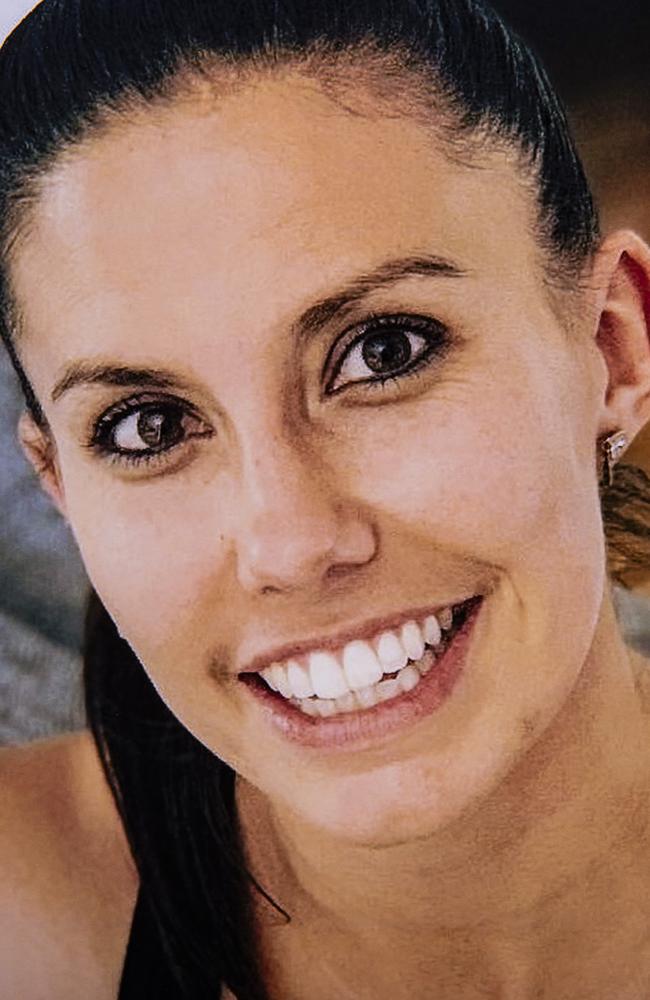
Queensland’s most qualified emergency medical respondent, Stephen Rashford, was called to the scene of the Camp Hill tragedy in February 2020 after her estranged partner Rowan Baxter doused Hannah and their three young children with petrol and set them on fire.
Dr Rashford today gave evidence at the inquest in the Brisbane Coroners Court, along with other first responders including police and paramedics.
Dr Rashford said he had deemed both Hannah and Baxter’s level of burns non-survivable.
He described how he and other witnesses had tried to reassure Hannah before she was taken off to hospital.
“I found her to be incredibly courageous,” Dr Rashford said.
The court heard how Hannah was facing 29 out of a total 39 ‘lethality indicators’ suggesting she was at an extremely high risk of a domestic violence in the months leading up to her death.
Dr Jacoba Brasch told the court some of those included suicide threats, custody disputes, actual or pending separation, age disparity and the victim’s intuitive sense of fear.
‘INCREDIBLY COURAGEOUS’: MEDICAL DIRECTOR REVEALS EXTENT OF HANNAH’S INJURIES
Queensland Ambulance Service medical director Dr Stephen Rashford, who attended the Camp Hill scene, said only three per cent of Hannah’s skin was not affected by burns.
He said the majority of her burns were full thickness burns.
“It’s essentially a non-survivable injury,” he said.
“Unfortunately from time to time we see burns to that extent … it indicates that it’s highly unlikely you will be able to resuscitate the person in the long term.”
Dr Rashford agreed that the only part of Hannah’s body not severely burnt was the bottom of her feet.
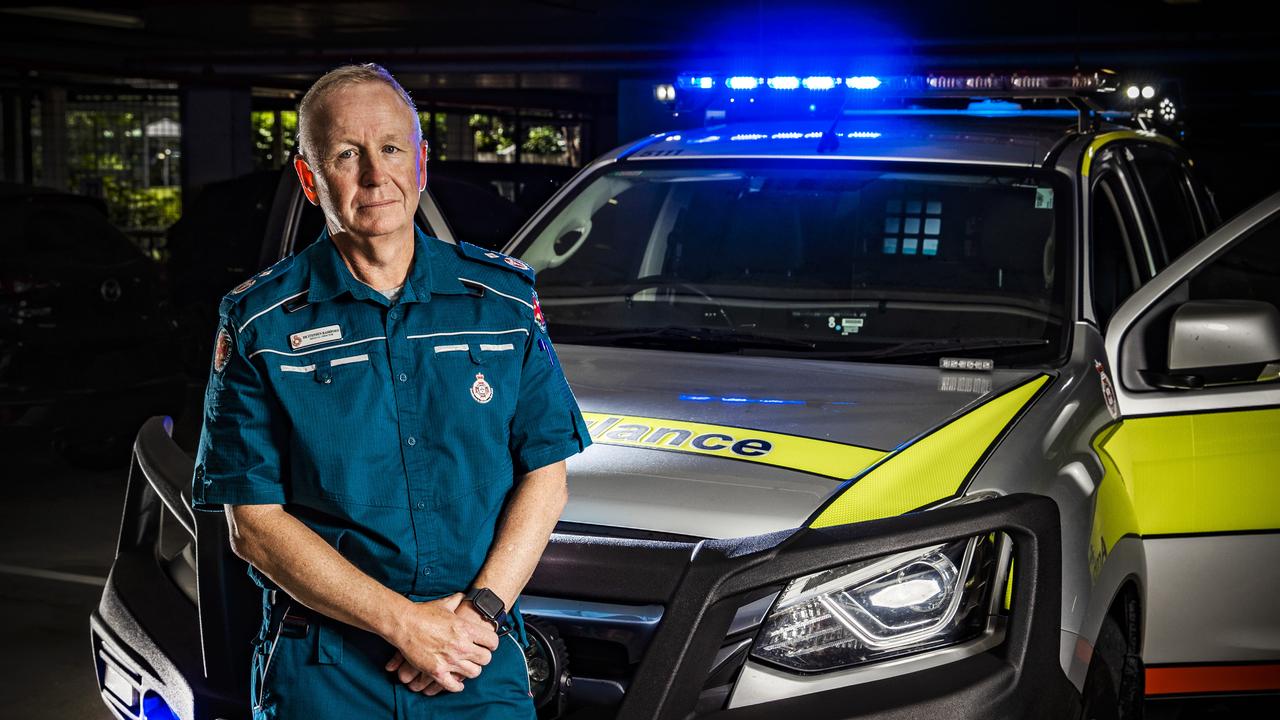
He said Baxter had burns to 80 per cent of his body.
“That’s a very significant burn,” he said, adding it was likely Baxter would not have survived his burns had he not stabbed himself.
Dr Rashford said he believed nothing could have been done to save the children from the fire.
“By the time I arrived on scene, that decision had been made – and I’ve got no doubt that was the correct decision,” he said.
“This was a very dynamic scene and there was a lot of running back and forwards,” he said.
Dr Rashford said he had assessed Baxter and he’d still been conscious. He’d left him under the care of other paramedics who planned to anaesthetise him.
But he said shortly after, a firefighter approached him and said Baxter had gone into cardiac arrest.
He said he left Hannah with experienced paramedics and returned to Baxter.
He said Hannah had been given fentanyl and ketamine for her pain.
Dr Rashford said it was likely that the severity of her burns meant that she was feeling less pain then you’d expect.
“One of the more distressing parts of people with very major burns, they can be quite cognitively intact and talking to you,” he said.
“They’re not screaming in pain.
“I had a brief conversation with her and I felt that whilst the circumstances of everything that had gone on were very distressing, I felt that pain was not the primary issue for her.”

Dr Rashford said when he arrived, the senior paramedic on scene directed him to Hannah as the most critically injured patient on scene.
“I was directed to Hannah and it was obvious that she had very severe burns,” he said.
“While I can prognosticate what the likely outcome is, it’s not the time to be saying we’re going to withhold treatment.”
Dr Rashford said serious burns such as Hannah’s were complicated to treat and involved a number of steps which began with cooling the burn which he said had been successfully done by people on scene who hosed her down.
“I felt the priority was to anaesthetise her very early to take away any distress and pain,” he said.
Dr Rashford said before he anaesthetised Hannah, he tried to reassure her she would be okay and wake up in hospital.
“We reassured her as much as we could and wanted to basically say we would take any pain away and that we hoped she would wake up in hospital and be in a better place,” he said.
“That’s always a very difficult conversation to have with anyone.
“I think in that circumstance a very important part of our care is reassurance.”
Dr Rashford said while he always tried to be honest with patients, he was not sure it was always the best policy.
“I just try to reassure people,” he said.
“I found her to be incredibly courageous.”
“We anaesthetised Hannah, we got her off all the wet clothes, started the fluid therapy and maintained high levels of sedation and analgesia and she was taken off to the hospital.”
DOC OPENED BAXTER UP ‘LIKE A CLAM’
After Hannah was taken from the scene, Dr Rashford then turned his attention to Baxter, who was also being treated by other paramedics.
“I still felt that he had significant burns, obviously not to the extent that Hannah did,” he said.
“He had this knife in his upper abdomen.”
Dr Rashford said the job of paramedics was to be professional and give everyone the same level of treatment, no matter the circumstances.
He said when Baxter went into cardiac arrest, he decided to perform a thoracotomy.
He said this was needed because Baxter had stabbed himself through the heart.
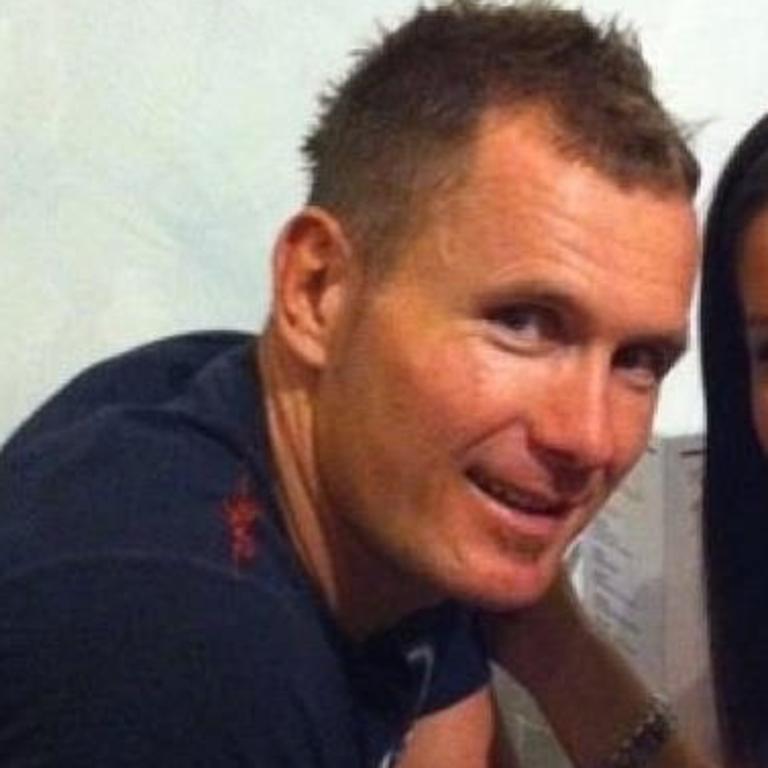
“This was a decision we had to make in 10 to 20 seconds,” he said.
“That means, we essentially make incisions from armpit to armpit … and you open the chest up like a clam.
“You can see the lungs, the heart and the like.
“I’d removed the knife at this point.
“What was obvious to me when I opened the chest up, Mr Baxter … had a significant amount of blood in the cavity between the pericardium and the heart.
“It looked like a big blue football.”
He said the heart had “agonal” or very limited activity.
OFF-DUTY PARAMEDIC COULDN’T SEE CHILDREN THROUGH FLAMES
The first witness to the inquest on Tuesday, paramedic Stephanie Ring, was driving home from a 13-hour shift when she noticed smoke coming from Raven St in Camp Hill.
Turning into the street, she saw Hannah’s car “completely engulfed” in flames.
“I could see a lot of bystanders and a lot of commotion around that scene,” she said.
“(The car was) completely alight. Flames easily reaching the tree level of the trees surrounding and I could hear explosions of I assume fuel tanks and whatnot.”
Ms Ring said as she approached, she saw Hannah who was “quite injured”.
“She was very severely burnt and there was a bystander who had a garden hose who was hosing her down,” she said
“I continued up to that person and the bystander who was hosing her down and basically said ‘what happened’.”
Ms Ring said Hannah told her ex-partner had set the car alight.
She said she then saw another person who had been severely burnt.
“She basically said … my (ex) partner, he poured fuel all over the car. He’s thrown a lighter in the car and then she just kept yelling and crying, ‘my babies are in the car, my children are in the car, why didn’t I just stay in the car with them?
“She did say he’s jumped in the car he’s poured petrol in the car, he’s set it alight.”
Ms Ring said she couldn’t see the children in the car because of the intensity of the flames.
She said she touched the water coming from the hose a bystander was using to make sure it wasn’t too cold.

She then noticed a bystander on the phone to emergency services and took the phone from him to tell the dispatcher what resources were needed.
Ms Ring said when she first arrived on scene, she saw Baxter covered in flames on the other side of the burning car.
“It appeared he was trying to put the flames out by rolling on the ground,” she said.
“He appeared to be lying down semi rolling around. I assumed he was trying to put flames out because he was quite obviously alight at the time.”
The paramedic said when she went to Baxter’s aid, he had used a knife to stab himself and a firefighter was with him.
“He was lying on the ground, there was a Queensland Fire and Emergency Services officer with him. The gentleman had stabbed himself with a knife and the QFES officer was holding that knife steady in his abdomen as he lay on the ground.”
Ms Ring said Baxter was making sounds but wasn’t saying specific words or saying anything that she could understand.
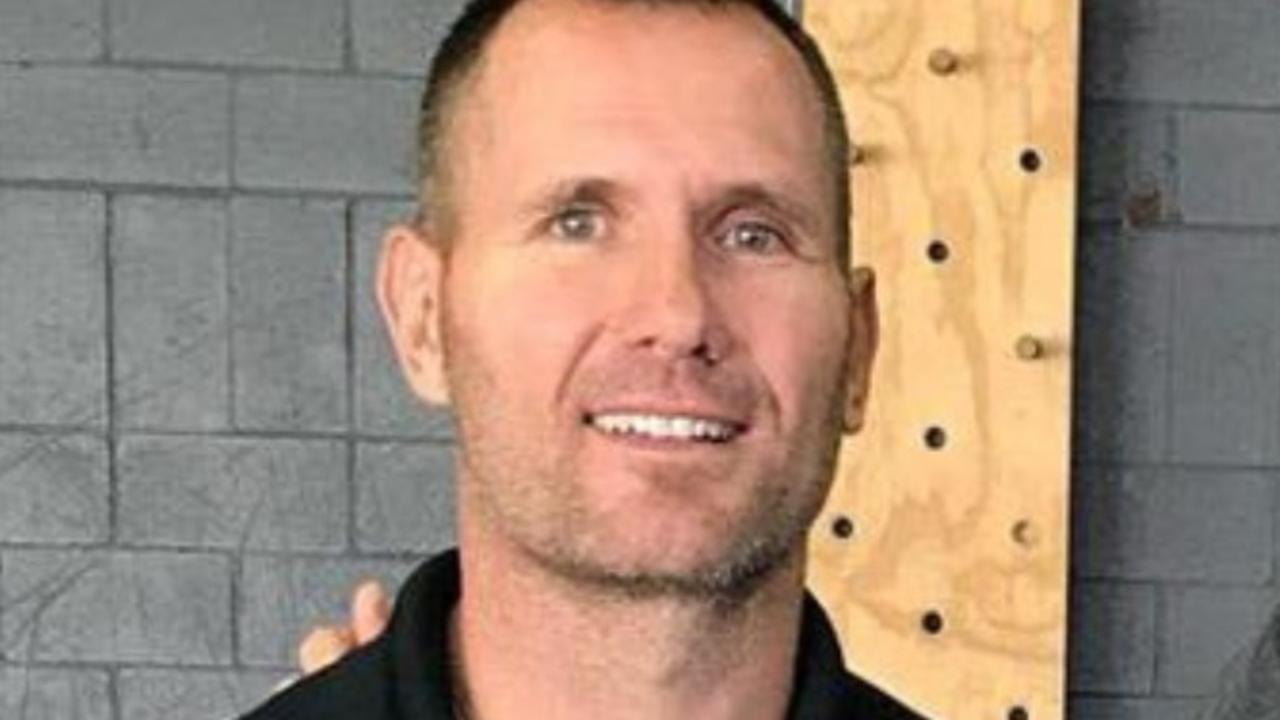
“He didn’t say anything verbally that I could understand or hear clearly but I did sort of go over and feel if he had a pulse and assess his injuries but there was nothing in terms of a conversation,” she said.
“When I first got to him he was definitely still conscious.
“He appeared to be interacting with me, tracking me, looking at my movements and was looking at firey who was holding the knife in his abdomen.”
Ms Ring said when she told Baxter they were going to assess his injuries, he did not appear to fight that.
Ms Ring said at that point, Baxter seemed to understand what she was telling him.
She said he was trying to make noises but did not say any words.
“It appeared that he was in too much pain or possibly injured to make … actual words,” she said.
She said the firefighter was still holding the knife in place in his abdomen.
“He was moving his limbs … and sort of moving his shoulders and whatnot,” she said.
“I probably noticed by the time the other ambulance crews were on scene he was definitely declining … possibly another minute.”
Ms Ring said after more paramedics arrived on scene, they worked on IV access, pain relief and fluids.
“It did eventually move on to further treatment that included cutting open his chest to perform what is essentially internal CPR,” she said.
FIREFIGHTER: CHILDREN HAD ‘NO CHANCE’ OF SURVIVAL
Station officer Anthony Eggins was a firefighter with 30 years’ experience based at Camp Hill in February 2020.
He said on the morning of February 19, they were tasked to attend a car fire where they were told there were children in the car.
He said in his experience, after seeing the flames, he knew anyone inside had “no chance” of survival.
“Flames out every window, so the heat had caused every window to break,” he said.
“Having been at the scene and again with hindsight, when the bells got to the station there was no help for them,” Mr Eggins said.

Mr Eggins said he could not see anybody inside the car because of the intensity of the fire.
He said they initially worked at putting the car fire out before noticing Baxter.
“Once we noticed the (man) on the side of the road I redirected that line to cool him,” Mr Eggins said.
He said he then spotted Hannah further down the road.
He said she was standing with her legs slightly apart and her hands in the air while a bystander held a hose on her.
“She appeared to still have some clothing on – underwear top and bottom perhaps,” Mr Eggins said. She did appear to be well burnt.”
He said he had directed a firefighter to use a line to cool Baxter, and he came back and told him: “mate this guy’s got a knife in him”.
Mr Eggins said he told the firefighter who was trying to put the car fire out not to direct the hose into the back seat “in case children were in there because it would maybe damage evidence”.
He later told a senior officer that when the fire crew arrived on scene, the car was “fully involved in fire and any person inside was already dead”.
‘IN PLAIN SIGHT’: BAXTER’S LEVEL OF RISK REVEALED
State Domestic, Family Violence and Vulnerable Persons Command Acting Superintendent Ben Martain, was questioned about an online training program focused on coercive control that all officers must complete.
He said the program, which takes about two hours to complete, went live at the end of January this year.
So far, 4500 from the service’s total workforce of 12,000 officers have completed the training.
“It starts with, firstly, what is coercive control,” he said.
Supt Martain said it includes videos from victims telling their stories and outlines typical perpetrator tactics.
He said one of the victims speaks about being in a coercively controlled relationship for 40 years where her partner controlled everything from what she wore to who she spoke to.
The training also includes scenarios that demonstrate “tricks” perpetrators use to manipulate police.
“A tactic perpetrators often use is they get in first, they call police first,” he said.
“They make themselves out to be the aggrieved.”
Supt Martain accepted a comment by Dr Brasch that Baxter had been “pretty good at going to the police station to tell his side of the story”.
Supt Martain said some of the domestic violence training programs police sought to roll out had been impeded by a Covid-19-imposed training moratorium which has recently been lifted.
But he said 9345 officers had completed domestic violence enhancement training since it was rolled out in June 2021.
Supt Martain said the service had also been working towards a trial of obtaining prerecorded video statements from the aggrieved party in domestic violence matters that would be able to act as their evidence in chief in court proceedings.
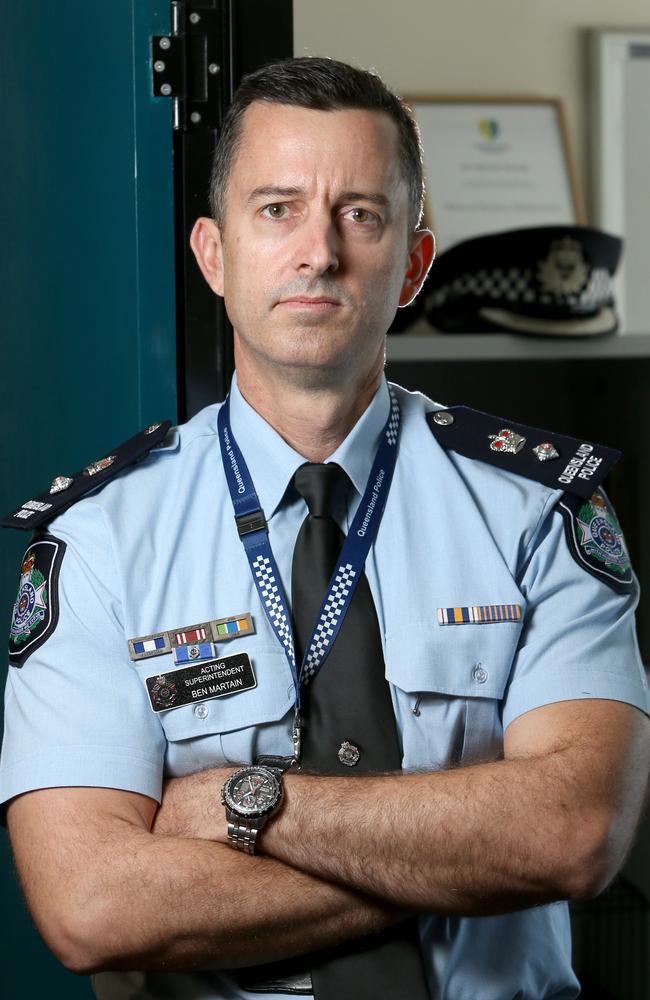
It is hoped a one-year trial of the program will be trialled in the Ipswich and Southport court districts pending legislative amendments.
He said it had a number of benefits including saving victims from having to give evidence in court and relive the trauma and not having to leave their home, often in the middle of the night with children, to provide a written statement at a police station.
Supt Martain said the program would also save significant time for police officers.
“On average it takes about an hour to obtain a notebook statement or typewritten statement,” he said.
“Based on trials, it takes about 15 minutes to get a statement using a body worn camera.”
He said on average it took about five hours for a domestic violence matter to be dealt with by police from the time they received the call, attended the scene, conducted investigations and completed the necessary paperwork.
Supt Martain said a moratorium on face-to-face training was put in place between March 19, 2020 to November 19, 2021 because of the coronavirus pandemic.
He said there were plans to hold face-to-face training around coercive control in the future.
“Once we have some certainty around what the legislative framework will look like … we will deliver face-to-face training to our officers in relation to coercive control,” he said.
“There is absolute certainty that that training will be delivered (pending the legislative framework).”
Asked if police were looking at attempting to reduce the time it took police to respond to domestic violence calls, he said they were.
He said one such proposal was to electronically serve domestic and family violence orders.
Supt Martain said in some areas, five per cent of domestic violence perpetrators were responsible for more than 50 per cent of the “total volume of harm”.
He said because of this, they were making that small group of perpetrators “very visible” to police.
Supt Martain said despite the protocols in place “unfortunately we don’t have a crystal ball”.
“A great proportion of domestic and family violence homicides have had no prior domestic and family violence contact with Queensland Police,” he said.
“We’ve got someone now who has 14 DVOs against 14 separate women but that person hasn’t gone on to commit DFV homicide.
“Yet we have other people who have no prior domestic and family violence orders who have no prior contact with QPS but go on to commit domestic and family violence homicide.”
Supt Martain said it was difficult to predict homicides.
“Every domestic and family violence homicide is tragic but the reality is they are statistically rare and very difficult to predict,” he said.
“I would love to find a risk assessment tool anywhere in the world that accurately predicts domestic and family violence homicide.

“The reality is at this current place in time, there is no such tool.”
Dr Jacoba Brasch told the court there are 39 “lethality indicators” that show how high risk a domestic violence situation is.
She said the average was 12. She said it was considered that Hannah was facing 29 lethality indicators.
“I’m going to suggest to you that many of them for Hannah were in plain sight,” she said to Supt Martain.
She said some of those included suicide threats, custody disputes, actual or pending separation, age disparity and the victim’s intuitive sense of fear.
Dr Brasch said Hannah had also called police after Baxter had abducted Laianah.
“The middle child was visibly suffering some anxiety (as a result),” she said.
She said Baxter also had some “red flags”, including that he had suffered childhood trauma.
COP EXPLAINS DOMESTIC VIOLENCE TRAINING
Senior Constable Angus Skaines from Annerley station said he graduated in 2011.
He said he likely completed a week or two of domestic violence training at the academy as well as additional training once a year.
He said there used to be a Constable training program where officers could undertake assignments to progress to their next pay point.
He said that specific program no longer exists.
He said in 2022 an online domestic violence training program was introduced that every police officer had to complete.
Sen Const Skaines said it included video scenarios with questions at the end, often multiple choice.
He said he believed online learning was “sufficient” to teach officers but acknowledged that everyone learned differently.
Sen Const Skaines said he was aware Commissioner Katarina Carroll recently issued a directive that officers had to complete training on coercive control.
He said he had completed that training.
He said domestic violence jobs can take anywhere from 15 minutes to a couple of hours on scene, depending on the complexities.
He said the paperwork generally took at least two hours to complete for a less complex matter and that a single domestic violence job can take up a whole shift.
The officer agreed that streamlining the process would be helpful.
“Domestic violence does take a lot longer than the majority of jobs you attend,” he said.
Sen Const Skaines said he had been on the way to Morningside when the call came through to attend the scene in Camp Hill.
He said as he drove to the scene, the “job” was upgraded to a Code 1, the most urgent type of call.
When he arrived on scene shortly after 8.30am, he activated his body worn camera and went to talk to Hannah who was being hosed down by a nurse.
“I had a conversation with Hannah, she was obviously significantly burnt, in a lot of pain,” he said.
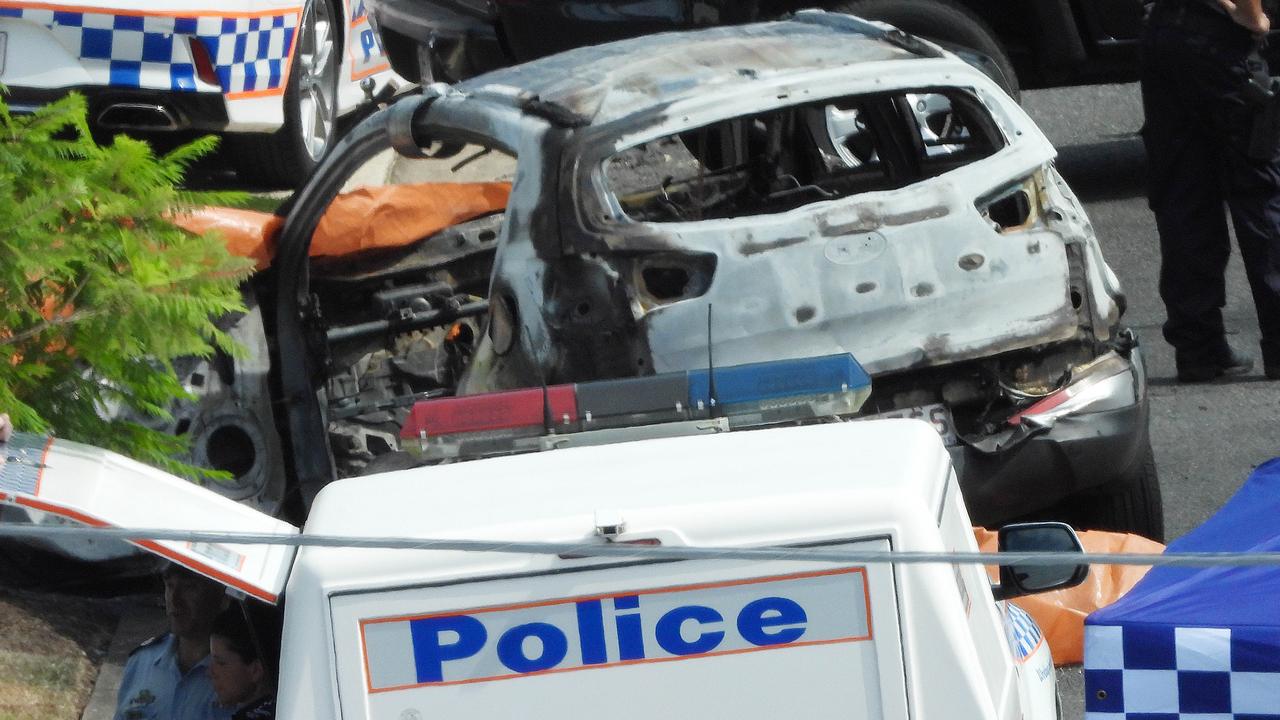
“(She was) incredibly brave, she was able to tell me a lot of detail in regards to what happened.”
He set about trying to find out the details of what happened and find out where Baxter was to see if a cordon needed to be set to catch him.
“Obviously it turns out he was still at the scene,” he said.
Sen Const Skaines in his experience, many people at crime scenes struggle to provide basic details but Hannah was able to provide fine details including dates of birth and spellings of names despite her pain.
“At a normal job even, people are so worked up they can’t get those details out,” he said.
“It was just amazing the things she was able to tell me and how much she was able to help us start piecing together what happened.”
Sen Const Skaines said Hannah told him what Baxter had said to her after getting into her car.
“She had just hopped in the car to go to school … she turned the car on and he’s jumped in the passenger seat,” he said.
“He said, ‘I wanted to see my children’. And she said, ‘no, get out, get out’.
“Rowan’s told her to drive. He had a jerry can in his hand.”
Sen Const Skaines said Hannah told him she had a domestic violence order in place and that Baxter had tried to break her wrist during an encounter two weeks earlier.
He agreed she’d said “the Carina police know everything”.
He said the last time he saw Hannah was when she was in the back of the ambulance.
The officer said a paramedic asked her if the morphine was helping her pain.
“She said no,” he said.
He said he recalled the Queensland Ambulance Service’s medical director Stephen Rashford had spoken about a stronger medication being on the way.
Sen Const Skaines said Hannah was able to answer his questions “amazingly” and that it was clear she was in more and more pain as time went on.
“I remember she said she couldn’t stand anymore, it was getting too painful,” he said.
Deputy State Coroner Jane Bentley praised Sen Const Skaines and how he handled himself in the face of such an awful situation.
“Officer Skaines I’ve watched the body worn camera footage that was taken on that day and your professionalism and level heatedness in the face of those horrific circumstances was commendable,” she said.
“Obviously if Baxter had lived, the evidence that you obtained from Hannah on that morning would have been indispensable in relation to the prosecution of him.
“And your evidence here today has also been very helpful to this inquest. So thank you very much.”
INQUEST TO EXPLORE POLICE RESPONSE TO DV EPIDEMIC
Dr Brasch said the court would also hear from Superintendent (Ben) Martain “about what the police service is doing about the epidemic that is coercive control and what they are doing to address the scourge of family violence in our state”.
Hannah was driving her three children, Aaliyah, 6, Laianah, 4 and Trey, 3, to school on the morning of February 19, 2020, when she was ambushed by her estranged husband.
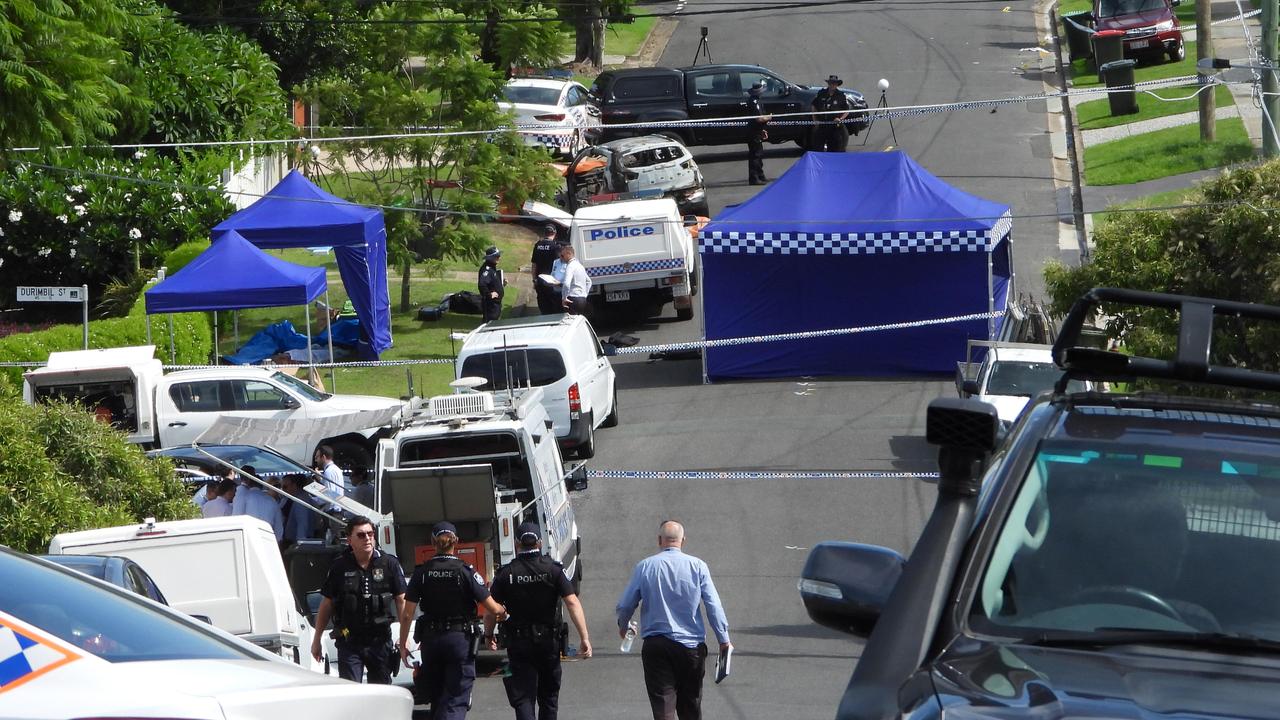
Rowan Baxter jumped into her car as she was leaving her parents Camp Hill home and told her to “just drive”.
The inquest has heard he was carrying a jerry can of fuel and had a knife.
Hannah drove a short distance before spotting a man washing his car and pulled over to scream for help.
Baxter doused them with fuel and set them alight as Hannah tried to fight him off.
The deaths of Hannah and her children sparked a national conversation about domestic violence.
More Coverage
Read related topics:Hannah Clarke





